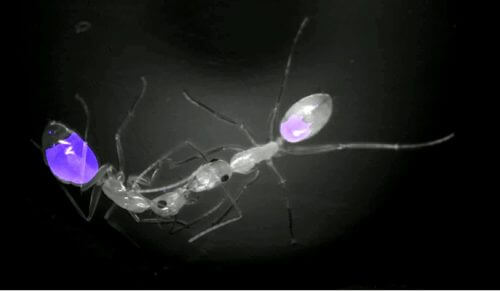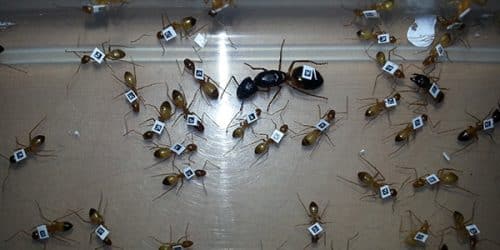
According to Jewish tradition, Joseph was appointed deputy to Pharaoh to oversee the establishment of food reserves that would prepare Egypt for the "seven lean years". In the absence of Joseph or Pharaoh, how does an ant colony monitor the amounts of food that are required to sustain the nest? New findings by scientists from the Weizmann InstituteWere published in the scientific journal eLife, It is discovered that ants can adjust the amount of food they collect to the needs of the entire nest - even without knowing the general degree of hunger in the colony. The research sheds light on how a cooperative system without central control maintains nutritional control - and may offer new insights into the functioning of decentralized control systems in the service of man, such as the electricity grid and cellular communication networks.
Food-gathering ants make up only about 10% of all ants in a colony. The activity of collecting food is made possible thanks to a "social stomach" - a goiter which functions as a food storage organ and is used to feed other ants in a kind of mouth-to-mouth feeding (trophallaxis). "How can such a small number of ants estimate the nutritional requirements of the entire colony at a given moment?" asks Prof. Ofer Finerman From the Department of Physics of Complex Systems. "What is the amount of information that a collecting ant needs to gather about the state of the colony in order to fulfill its mission successfully - and does it need to know the degree of hunger of each member of the nest, or is it enough for it to estimate the general degree of hunger in the colony?"
"How can such a small number of ants estimate the nutritional requirements of the entire colony at a given moment?"

To answer these questions, Prof. Finnerman and the research team used two methods: fluorescence imaging, which allowed them to monitor the amounts of food in the stomachs of Camponit Kadosha ants (Camponotus sanctus) - and marking each ant with tiny tags that made it possible to identify each of them throughout the feeding process.
"We discovered that the ants collect food according to the amount of food that is already in the stomachs of other ants they meet along the way," says Dr. Efrat Greenwald, a post-doctoral researcher in Prof. Finnerman's laboratory. "The amount of food that the gathering ants transfer to the first ant they meet seems quite random - it is not fed to its full capacity and the gathering does not 'get rid' of all its load. However, there is a strong relationship between the amount of food transferred and the amount already stored in the goitre of the fed ant." Since the fed ants represent the general degree of hunger in the colony, the scientists concluded that this is how food collection rates are adjusted to the degree of hunger of the entire colony. Therefore, foraging ants can adjust food collection to the needs of the nest even without knowing exactly what the general level of hunger is.
"The next step will be to investigate collective nutritional control in relation to more complex challenges, such as choosing between food sources of different quality and composition," says Lior Baltiansky, a doctoral student in the laboratory. "Ants are one of nature's most developed examples of distributed activity. Maybe with their help we can learn a thing or two about the inner workings of common man-made networks."
